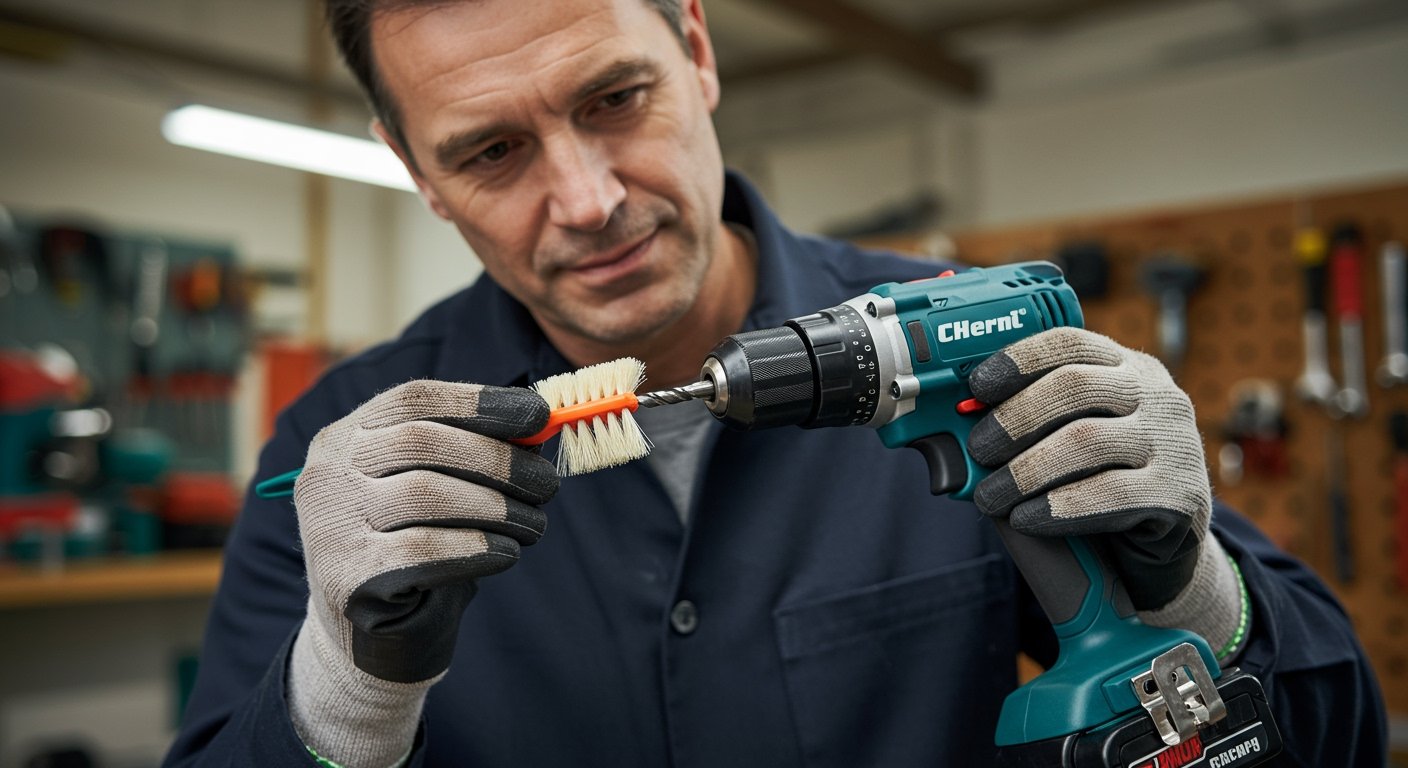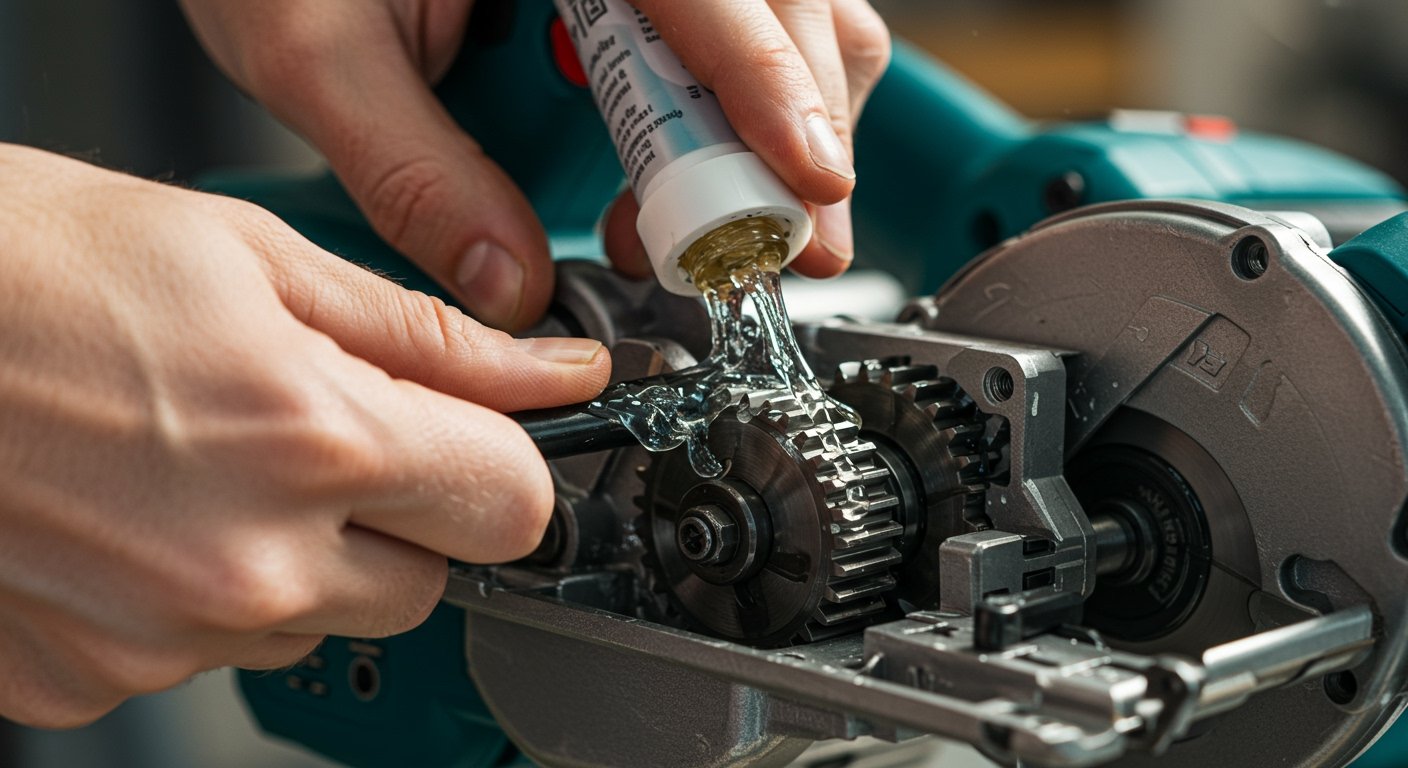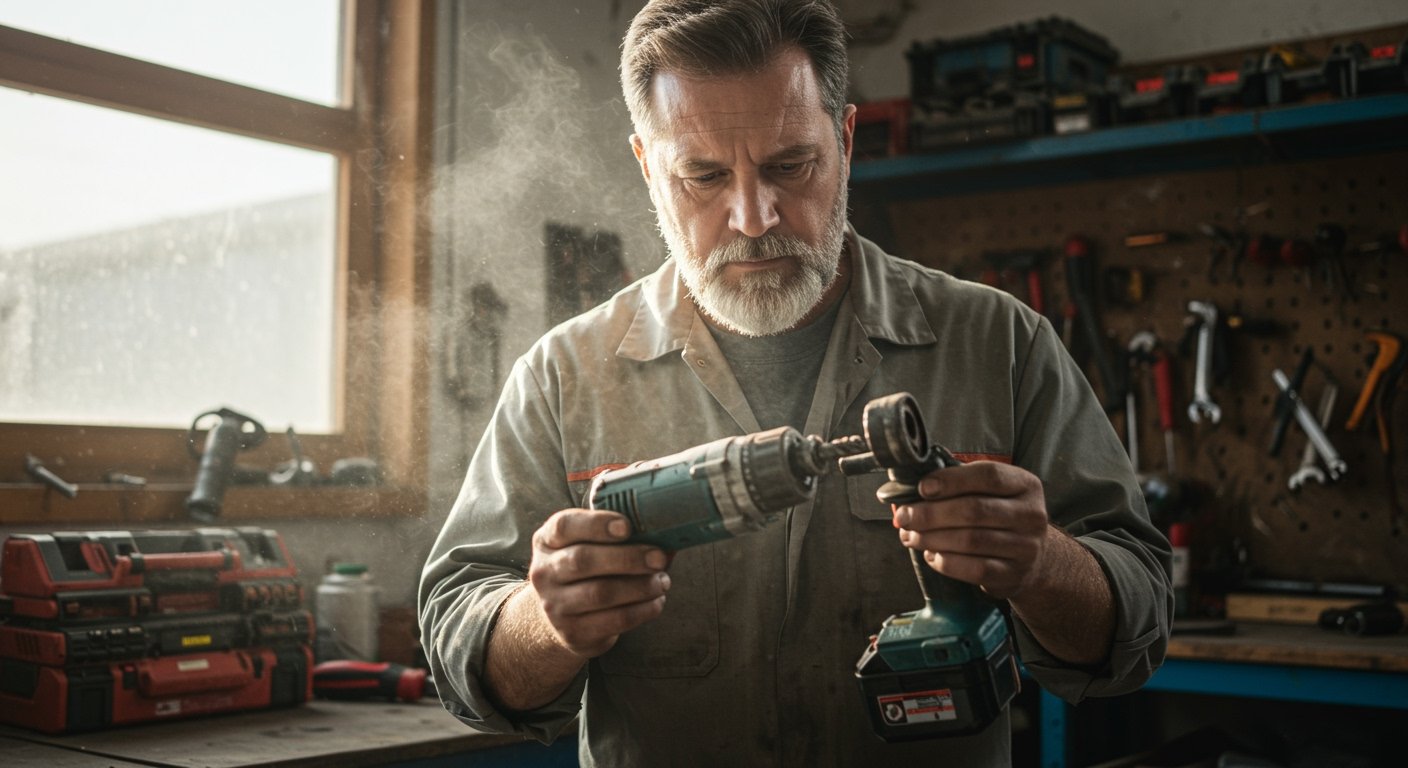For any DIY enthusiast or professional, power tools are invaluable. They save time, effort, and enable precision in countless projects. However, like any piece of machinery, their performance and lifespan aren’t guaranteed without proper care. This is where diligent power tool maintenance becomes crucial. Ignoring it can lead to frustrating breakdowns, costly repairs, and even safety hazards. Think of it as investing in the future of your workshop – a little effort now can yield significant returns later, ensuring your tools are always ready when you are. In fact, studies show that predictive maintenance can result in savings of 30% to 40% compared to reactive maintenance, highlighting the economic benefits of a proactive approach. [1]

The Unseen Costs of Neglect: Why Power Tool Maintenance Matters
Many of us are tempted to push our tools to their limits, or simply put them away after a job without a second thought. But this oversight has a hidden cost. Every $1 worth of maintenance deferred could quadruple to $4 in capital renewal costs later on. [1] This means that a small issue ignored today can become a much larger, more expensive problem down the line. Furthermore, running a piece of equipment to the point of failure could cost up to 10 times as much as a regular maintenance program. [1]
The good news? Roughly 90% or more of industrial equipment mechanical failures are avoidable, as only about 10% or less of industrial equipment actually wears out. [1] This statistic, while industrial, offers a powerful insight into the potential for extending the life of your home and workshop power tools through consistent care. By adopting best practices for tool care, you can drastically reduce the chances of unexpected failures and keep your tools operating efficiently for years.
What is the Best Way to Clean Power Tools?
Cleaning is often the first and most critical step in extending power tool life. Dirt, dust, sawdust, and grime can clog moving parts, cause overheating, and accelerate wear. So, what is the best way to clean power tools? The key is consistency and knowing the right techniques for different areas.
General Cleaning Practices
- After Every Use: Make it a habit to wipe down your power tools immediately after use. A clean, dry cloth is often sufficient to remove surface dust and debris. For especially stubborn residue, a slightly damp cloth with a mild cleaner (avoid harsh chemicals!) can be used, followed by thorough drying. [2, 3]
- Compressed Air for Vents: Power tools, especially those with motors, have vents to dissipate heat. These can quickly become clogged with dust. A can of compressed air is excellent for blowing out dust from these vents and other hard-to-reach crevices. Always unplug the tool before doing this. [3, 4]
- Brushes for Cracks: For textured grips or small gaps, a soft-bristled brush (like an old toothbrush) can help dislodge embedded dirt. [3]
Tackling Stubborn Grime and Specific Tool Types
For a deeper clean, especially on tools used in messy conditions:
- Always Unplug: Before any deep cleaning, ensure your electric tool is unplugged from its power source or the battery is removed. Safety first! [3]
- Mild Solutions: For greasy or sticky residues, a mild dish soap solution or a specialized tool cleaner can be used. Apply with a cloth and wipe thoroughly. Ensure no liquid seeps into the motor housing or electrical components. [3]
- Manufacturer’s Guidelines: Always consult your tool’s owner’s manual for specific cleaning instructions and recommended cleaning agents. Some tools may have unique requirements. [2]

How Often Should I Lubricate My Power Tools?
Lubricating power tools is essential for maintaining their moving parts, reducing friction, and preventing wear and tear. It also plays a vital role in preventing rust on tools. The frequency of lubrication depends heavily on the specific tool, how often it’s used, and the environment it operates in.
- Consult Your Manual: The golden rule for lubrication is to always refer to your power tool’s instruction manual. It will specify which parts require lubrication, the type of lubricant to use (e.g., grease, oil), and the recommended frequency. [1, 17]
- General Guideline: For most tools with moving parts (like gears, bearings, or pivots), a light application of appropriate lubricant every few months, or after particularly heavy use, is a good starting point. Tools used frequently or in dusty, damp environments may need more frequent attention.
- Signs It Needs Lubrication: If you notice increased friction, unusual noises, or sluggish movement, it’s a strong indicator that your tool needs lubrication. Never force a sticky part; try lubricating it first.
Proper Storage for Power Tool Longevity
How should I store power tools for longevity? Proper storage is just as vital as cleaning and lubrication for extending power tool life. Environmental factors like moisture, dust, and extreme temperatures can significantly degrade your tools over time. [4]
Preventing Rust on Tools
Rust is a common enemy of metal tools, forming when iron or steel is exposed to moisture and oxygen. Preventing rust on tools is key to their long-term health. [7]
- Dry, Climate-Controlled Environment: Always store your tools in a cool, dry, well-ventilated space. Avoid damp basements, garages prone to condensation, or outdoor sheds without climate control. [1, 4]
- Toolboxes and Cases: Storing tools in their original cases, toolboxes, or dedicated cabinets protects them from dust, moisture, and physical damage. Some toolboxes can even be fitted with rust-inhibiting liners or silica gel packs to absorb moisture. [7, 9]
- Protective Coatings: For metal surfaces, especially on hand tools or exposed parts of power tools, applying a thin layer of rust-inhibiting oil or paste wax can create a protective barrier. Remember to wipe off any excess before storage. [9, 15]
Cordless Tool Battery Care
Cordless tools offer incredible convenience, but their longevity relies heavily on proper battery care, especially for lithium-ion batteries. [6]
- Avoid Extreme Temperatures: Do not store or charge batteries in excessively hot or cold conditions, such as direct sunlight, inside a hot vehicle, or in freezing temperatures. Extreme temperatures can significantly reduce battery life and performance. [8]
- Partial Charge for Storage: For long-term storage (over a month), charge or discharge your lithium-ion batteries to around a 50% capacity. Storing them fully charged or completely drained can shorten their lifespan. [6, 8]
- Use the Right Charger: Always use the charger specifically designed for your battery and tool. Off-brand or incompatible chargers can damage the battery and pose safety risks. [6, 11]
- Monitor for Damage: Regularly inspect batteries for any signs of damage, swelling, or leaks. Discontinue use immediately if you notice any issues and dispose of them properly. [11, 13]
- Charging Location: Charge batteries on a non-flammable surface, away from combustible materials. [12]
Common Mistakes that Shorten Power Tool Lifespan
Understanding common power tool issues and avoiding mistakes can prevent premature wear and tear. What are common mistakes that shorten power tool lifespan?
- Overloading the Tool: Pushing a tool beyond its intended capacity or forcing it through materials too quickly puts immense strain on the motor and internal components, leading to overheating and early failure. Always let the tool do the work.
- Ignoring Warning Signs: Strange noises, excessive heat, burning smells, or unusual vibrations are not normal. Ignoring these can turn a minor issue into a catastrophic breakdown. Stop using the tool immediately and investigate.
- Improper Bits/Blades: Using dull blades or incorrect drill bits forces the tool to work harder, generating more heat and stress. Ensure your cutting accessories are sharp and appropriate for the material and task. (For essential woodworking tools, including a discussion on blades and bits, visit 10 Essential Woodworking Tools for Beginners.)
- Incorrect Storage: As discussed, leaving tools exposed to moisture or dust is a guaranteed way to invite rust and electrical issues.
- Neglecting Cleaning: Allowing sawdust, dirt, and debris to accumulate inside vents and around moving parts will lead to overheating and mechanical failures.

Knowing When to Replace Power Tool Components
Even with the best power tool maintenance, some components are consumables or wear parts that eventually need replacement. When should I replace power tool components? Recognizing these signs can save you from further damage to the tool or, more importantly, injury.
- Blades and Bits: Dull saw blades, drill bits, or router bits reduce efficiency and put a strain on your tool. Sharpen them if possible, but replace them when they become too worn or damaged to sharpen effectively. [4]
- Carbon Brushes: Many corded power tools use carbon brushes that wear down over time. Reduced power, intermittent operation, or excessive sparking are signs they need replacement. This is a relatively easy DIY tool maintenance task for many models.
- Power Cords and Plugs: Frayed, cracked, or damaged power cords and plugs are a serious safety hazard and should be replaced immediately by a qualified person or service center. [3]
- Batteries: As mentioned in cordless tool battery care, a battery that no longer holds a charge, swells, or shows significant reduction in run-time needs replacement.
- When to Replace the Whole Tool: A general rule of thumb is that if the cost of power tool repairs exceeds 50% of the price of a new tool, it might be more economical to replace the tool entirely. [1] This helps you make smart decisions about servicing power tools at home versus investing in new equipment.
Advanced Tips for Electric Tool Longevity
Beyond the basics, a few extra steps can further enhance electric tool longevity:
- Regular Inspections: Even if not actively cleaning, a quick visual inspection before and after use can catch potential issues early. Look for loose screws, damaged casing, or unusual play in moving parts. [2]
- Cool Down Periods: Don’t continuously run a power tool for extended periods, especially under heavy load. Allow it to cool down to prevent motor overheating and extend its life. [17]
- Follow Safety Precautions: Always use appropriate personal protective equipment (PPE) and follow the operating guidelines for each tool. Safe usage prevents accidental damage and ensures your well-being. The Occupational Safety and Health Administration (OSHA) provides general safety tips for tools, emphasizing the importance of proper PPE and safe work practices to prevent injuries and maintain a safe working environment. [22]
- Professional Servicing: For complex issues or tools you rely on heavily, consider periodic professional servicing. This is especially true for specialized equipment that requires calibration or intricate repairs. Servicing power tools at home is great for basic upkeep, but sometimes expert help is invaluable.
Conclusion: Your Tools, Built to Last
Maintaining your power tools for longevity isn’t just about saving money; it’s about ensuring they perform reliably, safely, and efficiently for every project. By adopting a routine of cleaning power tools, lubricating power tools, storing power tools properly, and being mindful of common mistakes and wear, you transform reactive repairs into proactive prevention. This comprehensive power tool upkeep guide empowers you to keep your valuable equipment in prime condition, making your workshop a more productive and enjoyable place. Investing time in DIY tool maintenance today means enjoying the benefits of well-functioning tools for many years to come.
Key Takeaways
- Consistent power tool maintenance significantly extends tool life and saves money, avoiding up to 40% in reactive maintenance costs.
- Regular cleaning with a dry cloth or compressed air is crucial for preventing dust buildup and overheating.
- Lubricate moving parts according to the manufacturer’s manual to reduce friction and prevent rust.
- Store power tools in a dry, climate-controlled environment to protect against rust and environmental damage.
- Proper cordless tool battery care, including partial charging for storage and avoiding extreme temperatures, is vital for battery longevity.
- Avoid common mistakes like overloading tools, ignoring warning signs, and using dull accessories to prevent premature failure.
- Replace worn components like blades, brushes, and damaged cords promptly to ensure safety and optimal performance. Consider replacing tools if repair costs exceed 50% of a new tool’s price.
